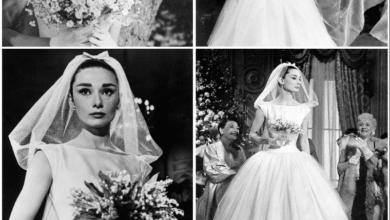Marilyn Monroe Reveals the Toughest Movie of Her Career—The Untold Struggles Behind ‘Something’s Got to Give’
OPINION: This article may contain commentary which reflects the author's opinion.
Marilyn Monroe, an enduring Hollywood icon, faced numerous challenges throughout her career, both on and off-screen. While many of her films are celebrated for their performances and cultural impact, Something’s Got to Give (1962), often considered her toughest project, stands out due to its tumultuous production and the personal struggles Monroe faced during its making. Though Monroe did not explicitly call it the hardest film of her career in every interview, the evidence surrounding her involvement in the film, her personal reflections, and the chaotic production history strongly suggest that this film represented the peak of her professional hardships.
Monroe’s Reflections on Career Struggles
In a poignant interview with Richard Meryman for Life magazine, published in August 1962, Monroe opened up about the challenges she faced in her career, particularly the burdens of fame and the toll it took on her personal life. While she did not directly declare Something’s Got to Give as her “toughest” film, the interview highlighted her struggles with the project, which was deeply affected by personal issues, health complications, and studio conflicts. Monroe’s struggles on the set of Something’s Got to Give were a major part of her public narrative, and she hinted at how difficult it was for her to navigate the pressures of returning to film after a year-long hiatus.
Production Hurdles and Personal Turmoil
Something’s Got to Give was meant to be a remake of the 1940 classic My Favorite Wife, directed by George Cukor. The film’s production, however, became mired in chaos. Monroe, who had been absent from the screen for over a year, faced significant health issues, including a recent gallbladder surgery and a subsequent weight loss of 25 pounds below her normal weight, contributing to delays and the instability of her performance. According to sources like Something’s Got to Give (Wikipedia) and The Independent, the movie’s production was repeatedly interrupted due to Monroe’s personal and physical struggles.
Monroe’s tumultuous on-set behavior, which included arriving late, missing days of filming, and displaying emotional instability, culminated in her firing from the project in June 1962. However, just months later, efforts were underway to rehire her, and the film was poised to resume production. Tragically, Monroe passed away in August 1962, just weeks before the film’s revival could come to fruition. The footage shot for Something’s Got to Give remained largely unseen for many years, further underscoring the film’s incomplete and troubled legacy.
The Impact on Monroe’s Career
Though Monroe had experienced difficulties on other films, including The Misfits (1961)—a project that was emotionally taxing due to her deteriorating marriage to playwright Arthur Miller—Something’s Got to Give stands out as the most challenging. The fact that it was an unfinished project, compounded by her deteriorating health and the constant conflicts with the studio, marked a significant low point in her career. Other films, like Some Like It Hot (1959), showcase her comedic brilliance but lacked the production strife that marred Something’s Got to Give.
This film was a culmination of the complexities of Monroe’s career, highlighting her immense talent as well as the internal and external struggles she faced in trying to fulfill the expectations placed on her. Monroe’s last days, as documented in sources like Marilyn: Something’s Got to Give (1990), a documentary about the film’s troubled production, serve as a poignant reminder of her vulnerability and the heavy burden of fame she carried until the end of her life.
Conclusion: Something’s Got to Give as Marilyn Monroe’s Toughest Film
While Monroe’s filmography is filled with challenges, both personal and professional, it is clear that Something’s Got to Give stands as her toughest movie, both in terms of production difficulties and the toll it took on her health and well-being. Although Monroe never directly called it the hardest film of her career, the available evidence, including her interview reflections and the documented struggles on set, suggests that the making of Something’s Got to Give was fraught with personal and professional hardship. The film’s unfinished status and the tragic events that followed its production only add to its significance in understanding Monroe’s complicated legacy.
In many ways, Something’s Got to Give encapsulates the complexities of Marilyn Monroe’s career—her brilliance, her personal struggles, and the harsh realities of navigating fame. The film remains an important part of her history, offering a bittersweet glimpse into the challenges she faced during her final years.



